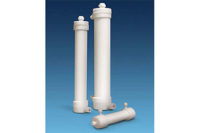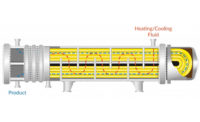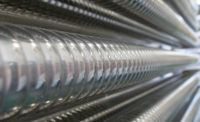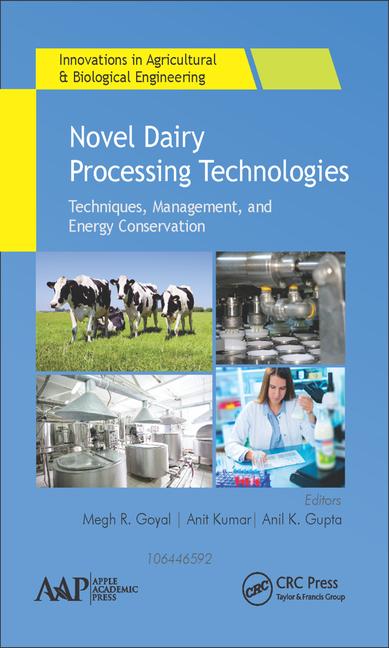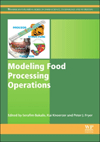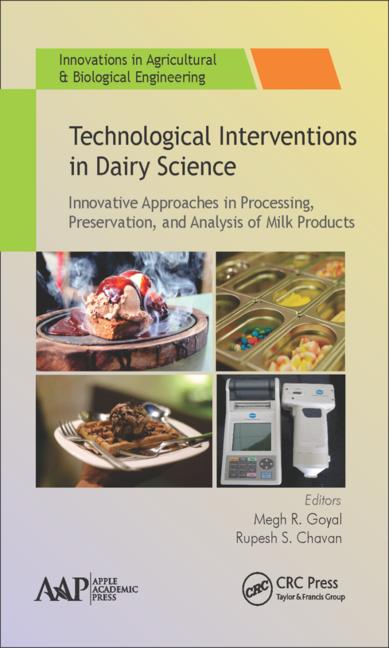While it may not be as prominent as many other dairy processing technologies, the heat exchanger is far from lowly. The equipment, which is used to transfer heat between two or more fluids during the cooling and heating processes without mixing the fluids together, can have a major impact on processing efficiencies and operating expenses. But to realize maximum benefits from systems, it is crucial that processors leverage the optimal devices for their specific operations while also adhering to the proper maintenance and sanitation procedures.
Plate heat exchangers, for instance, offer high heat transfer efficiency due to a large surface and typically have a smaller footprint than shell and tube exchangers, says Adam Koss, mechanical engineer for Koss Industrial Inc., a Green Bay, Wis.-based heat exchanger developer. He notes that plate exchangers are ideal for handling low- to medium-viscosity fluids at higher flow rates, while shell and tube designs can operate at higher temperatures and pressures and are a good option for fluids that are highly viscous or contain particulates.
Indeed, a plate heat exchanger cannot handle products with fibers or particulates as they would get caught on the contact points across the plate and lead to cleaning and sanitation issues, says Kevin Kennedy, an engineer and heat exchangers product manager for Tetra Pak Inc., a Denton, Texas-based heat exchanger supplier.
“The selection of what type to use comes down to a case-by-case basis to get the most cost-effective and efficient type of heat exchanger that fits the allotted space at a customer site,” he notes.
Processors also should consider if technologies have enough steam capacity to achieve the right temperature and the refrigeration capacity to adequately cool the product, says Dan Jacoby, automation solution consultant at Malisko Engineering, a St. Louis-based plant automation systems service provider and a certified member of the Control System Integrators Association.
“These two variables need to be assessed for each product you can potentially run on the heat exchanger,” he states, “especially if you are running various products at different incoming and outgoing temperatures.”
Operators, meanwhile, should seek guidance from manufacturers and vendors when determining the optimal heat exchangers for their operations, Koss says, as the best selection may generate a net cost savings over time without being the lowest price option upfront.
“A system with high regeneration ability will require increased capital investment, but these costs are often recovered quickly because they use less energy,” says Jeff Timbro, product sales specialist for SPX Flow Inc., a Charlotte, N.C.-based supplier.
Indeed, processors should compare operational costs, as well as upfront capital expenses, when selecting equipment, says Matt Hale, international sales and marketing director for Watford, England-based HRS Heat Exchangers. He adds, however, that operators should base decisions on the “best product for the job and not just on price. Processors should be open to advice from suppliers.”
Keep efficiency top of mind
Regenerative heating is the first consideration when seeking to have the processing line work most efficiently for energy conservation, says David Miles, executive vice president with MicroThermics Inc., a Raleigh, N.C.-based technology supplier. With regenerative heating, the incoming cold product serves as the cooling medium for product exiting the hold tube.
“Conversely, the product exiting the hold tube acts as the heating medium to heat the incoming cold product. The reclamation of energy from this design is startlingly high,” he states.
Timbro notes that recirculating water loops are often used for heating, cooling, or indirect regeneration, and it is important that the loops are properly vented to maintain steady water flow. In addition, it is critical that processors maintain cleanliness in heat exchangers. Fouled systems require a much higher amount of energy to heat or cool products, he says.
Full clean-in-place (CIP) cleaning is critical for regenerative heating efficiency, Miles states. Meanwhile, regular preventative maintenance of the exchanger and all related components — including circulator pumps, steam generators, sensors and such control elements as valves — also is necessary for minimizing the energy necessary to produce products. It is important, too, for processors to choose designs that enable long run times between CIP cleanings to keep the plants operating as much as possible, he notes.
Kennedy agrees that the heat exchanger design is a major determinant for how efficiently the system will operate. He says, for instance, that achieving a 94% regeneration on milk using high-temperature/short-time (HTST) processing versus 90% regeneration could save a user more than $9,000 annually.
“It can all come down to return on investment and initial investment consideration,” Kennedy says. “It may cost a few more dollars to get more plates on an HTST when purchasing the unit, but saving money on utilities can add up quickly and pay for itself in a year or less.”
Other important considerations for enhancing efficiency include the selection and operation of steam traps and electrical drives that control pumps, Timbro says.
“Improperly functioning steam traps can drastically impact the system’s ability to heat properly,” he says. “Pumps provided with variable-speed drives can spur a more efficient use of electricity.”
Leveraging technologies that provide detailed data on the performance of machinery can also help to minimize operating expenses, says Penny Vander Velden, director of sales and marketing for AGC Heat Transfer Inc., a Bristow, Va.-based supplier of sanitary plate heat exchangers. Flow meters, temperature probes, pump data, and conductivity meters all can help verify that the process and equipment are functioning optimally.
“Heat exchanger operation is most efficient when running as designed,” she says. “Product flow rates are carefully engineered considering the product and cooling/heating media. Ensuring the heat exchanger design has been vetted out if there is a change in the product or in the media is very important to remain efficient.”
Make cleaning a major concern
Taking the necessary sanitizing steps is also crucial for achieving operational efficiencies, analysts say. “As material collects on the walls of a heat exchanger, it reduces the efficiency of transferring heat from one fluid to another,” Miles notes. “Proper CIP cleaning prevents the accumulation of material on the product side.”
Effective heat exchanger sanitation includes dissolving leftover or burned-on product, he says.
“Therefore, selecting the right reagents to remove the organic and mineral deposits is critical,” Miles states.
Suppliers are generally the best source for recommending the proper reagents, he says, adding that processors should regularly rotate reagents.
“There is no reagent that will clean out all different types of deposits,” Miles says. “Each one will have strengths and weaknesses.”
Timbro agrees.
“Due to the wide range of products produced in today’s market, it’s important to work with the plant’s chemical supplier to optimize the selection of specific cleaning chemicals,” he says. “New products may require different chemicals or procedures.”
In addition, it is important for processors consider the compatibility of the chemicals with the installed equipment, Timbro says, noting that improper chemicals can impair devices, cause downtime and create unsafe working conditions.
“Plate heat exchangers, for example, are susceptible to stress corrosion from chlorides,” he states. “This can damage the plates, causing leaks or even conditions where product or cleaning chemical can spray out, posing a significant risk to operators.”
The best heat exchangers, meanwhile, support standard CIP practices and incorporate stainless steel and a hygienic design for use in the dairy industry, Hale says.
“Avoiding rough surfaces and crevices where dirt can adhere, using easy-to-clean non-tarnishing materials such as stainless steel and enabling effective drainage and/or pumping out will all help to ensure efficient cleanability and effective CIP,” he notes.
Preventative maintenance that requires the disassembling of heat exchangers also is critical for optimal sanitation, Miles says, particularly for exchangers that split the product flow into multiple streams.
“If one or more streams become clogged during processing, regular CIP cleaning may not clear that clog since the CIP solutions will actually flow into channels that are not clogged,” he notes. “Regular disassembly ensures that all channels on both sides of the walls are clear and clean.”
Indeed, operators should gauge the ease in which the heat exchanger comes apart for cleaning when selecting designs, Koss says. While only a standard rinse and CIP process are necessary to clean heat exchangers, processors still will need to open and visually inspect units to confirm the rinse and CIP regiment is effective, Kennedy notes.
“Once a baseline is set, a routine open and inspection interval can be determined,” he states. “Unless there is a change in product formulation or running condition, it becomes pretty much like clockwork.”
Koss notes that plate heat exchangers are generally easy to clean and maintain because of simpler disassembly. Shell and tube styles, meanwhile, have less potential for accumulating fluid deposits such as crystallization, sediment or scaling.
Consistency, meanwhile, is key if a heat exchanger is to operate efficiently and effectively, Kennedy says. “Making sure the unit is properly cleaned, maintained and everything is operating at its designated set points is critical,” he states. “As there are no moving parts in most heat exchangers, they should run the same day to day. If you run great on Tuesday, have issues on Wednesday, but are fine again on Thursday, it would be a sign of an issue elsewhere in the system.”
Give direct steam injection its due
Dairy processors must consider a host of elements in selecting the most pertinent heating systems outside of the heat exchanger space, too. Pinpointing the appropriate direct steam injection (DSI) heater requires analysis of such factors as the heat-load requirement, liquid flow rates and pressure, and steam pressure, says James Bushard, technical sales and service specialist for Pick Heaters Inc., a West Bend, Wis.-based DSI heater developer.
Direct steam injection devices heat water and other liquids by directly injecting steam into the liquid to maintain or raise temperatures. Similar to heat exchangers, thorough cleaning is crucial for high performance, analysts note. The DSI system configuration supports effective sanitizing by allowing access to the injector so that processors can easily remove the internals for inspection and cleansing, Bushard says.
“An external modulating control valve mounted adjacent to, but not on, the unit allows for rapid and quick cleaning without having to disturb the control components and seals,” he notes.
Identifying the proper sized DSI heater for a specific application also is one of the key operating challenges, Bushard says.
“Size the DSI heater for the actual demands and consider the worst-case scenario, but be careful not to oversize the system,” he notes. “Accurate heater sizing provides optimum performance.”






